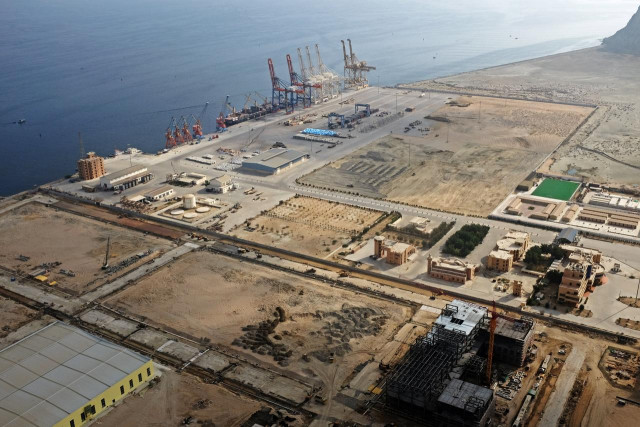Recipe for SEZ success
If the government can figure out just one SEZ right and make it a success, there can be countless others.

A general view of Gwadar port in Gwadar, Pakistan. PHOTO: REUTERS
The Phase II of the China-Pakistan Economic Corridor (CPEC) is here, with industrial cooperation as one of the two new priority areas going forward. But notwithstanding these recent developments, even earlier the experts were convinced that effective industrial cooperation is the only way to ensure that the massive CPEC infrastructure leads to a prosperous future for Pakistan. The ultimate success of CPEC would be to use improved connectivity to enhance trade and drive industrialisation. And SEZs are the first milestone on this road.
No wonder, when Chinese Vice President Wang Qishan recently visited Pakistan, he made a special emphasis on tremendous potential of industrial parks in driving economic development of Pakistan, during his address at Pak-China Institute.
So what are these zones and how can we manage them effectively?
As opposed to common perception, SEZs are not merely about lower taxes, reduced tariffs or lucrative investment incentives. There is much more to them. In fact, these carrots remain peripheral to the central concept behind SEZs.
The special economic zones are special, because they promise to avoid the investment impediments otherwise present in the country. In the 1980s, the SEZs offered China a deviation for its otherwise closed economy. The SEZs offered laboratories for progressive reformers to test their breakthrough ideas while comforting conservatives that these experiments remained confined to tight geographical boundaries, not affecting country’s overall policy framework. The SEZs were used to tinker with capitalism to attract foreign capital and the results were phenomenal, turning fishing villages into mega industrial complexes.
Since then, China has moved much farther, but the thought behind SEZs has not changed much. These enclaves remain far ahead on the policy curve, bending and circumventing otherwise strict Chinese policies. Some of the Chinese zones, for instance, now provide much open Internet access, as opposed to countrywide censorship of certain sites.
This is the philosophy we need to embrace in Pakistan. Let’s think of wildly progressive policy reforms and experiment with them in these zones. These SEZs should, in fact, be a paradise for reformers, who want to bring Pakistan on a par with Shenzhen, Dubai or Singapore in terms of investor experience.
But how can this journey start? There are a few basic ingredients and a simple recipe. Let the private sector build and manage the infrastructure and let the government bring cutting-edge legislation, enabling these SEZs to have their own civil and commercial legal framework.
The SEZ legislation should be based on three principles of ease of administration, transparency and automaticity. Ease of administration should cover effective use of one-window operations, minimal licensing requirements and use of negative lists, streamlined approval processes and accelerated customs inspection and procedures. Transparency should lead to limited discretion, avoiding case-by-case evaluation of applications and using a simple process based on clearly defined criteria, whereas automaticity should mean putting in place default mechanisms to confer automatic approvals within a pre-determined time period.
Another important piece of the puzzle is to establish truly autonomous and empowered zone authorities and letting them run these zones. Such authorities, manned with the best global talent, should also be made responsible for administering the SEZ civil and commercial legal framework.
There are nine planned priority SEZs under CPEC, along with a free zone in Gwadar. But numbers hardly matter. If the government can figure out just one SEZ right and make it a success, there can be countless others. Or else more numbers without a clear recipe for success will only mean more chances of failure.
Published in The Express Tribune, June 4th, 2019.
Like Opinion & Editorial on Facebook, follow @ETOpEd on Twitter to receive all updates on all our daily pieces.















COMMENTS
Comments are moderated and generally will be posted if they are on-topic and not abusive.
For more information, please see our Comments FAQ